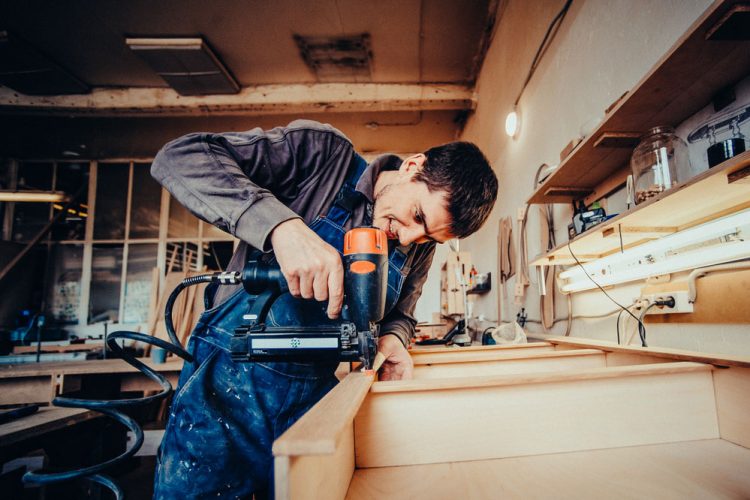Do you often think of a nail gun to use for projects? Well, it’s better than considering hammers because a nail gun doesn’t need your strength to drive nails into any kind of material. Also, the sound from hammer and nails can deaden the nerves in your ears or trigger headaches. The blow from a hammer needs much force to drive nails into any material. Instead, nail guns come with disposable canisters that provide fluid compression, air compression, natural gas, or electromagnetic induction.
Other high-end nail guns run on electricity, and the cordless types use built-in DC batteries. Generally, a nail gun (nailer) is used for light-duty DIY tasks, construction projects, carpentry, and plumbing. Let’s share some amazing features of a highly functional nailer.
Types Of Nail Guns – The Key Differences
Nail guns can be categorized according to their purpose. The difference between respective types of nail guns might be their design and firing power. However, their weight, and depth-drive adjustment features may vary. These are some models of our basic nail guns.
Basic Nail Gun Types
Framing Nailer
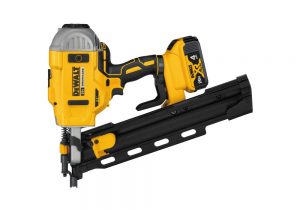
Typically, the framing nailer is one of the nail guns for heavy-duty projects. Construction activities that involve industrial projects and wooden siding often require framing nail guns. Also, the framing nailer is ideal for joining 2x4s; it offers good grip for fences, beams, and decks that involve the use of nails. This device is compatible with round head and clipped head nails of between 2.5 to 3.5 inches.
Flooring Nailer

Unlike regular nail guns, a flooring nailer uses air compression (pneumatic) to hold the edges of tongue-and-groove floorboards. The ease of installing wooden floors with flooring nail guns makes the task simpler than using hammer and nails. Another advantage of flooring nailers is the protection it provides for your knees and palms. The mechanism that drives nail into floorboards with a manual flooring nailer require the nylon mallet to hit its plunger.
Roofing Nailer
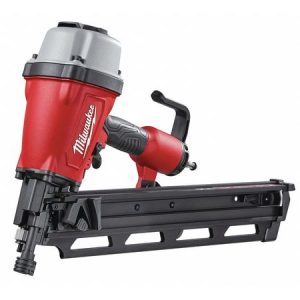
The roofing nailer is a type of coiled nail gun for installing new roofs, and it comes in different types. Usually, this nail gun has a compact design that ensures less reloading time when you are working on roofing projects.
Spring loaded: The spring loaded type work with springs to drive nails from its chamber into the roof’s shingle.
Pneumatic: The pneumatic type comes with a canister that uses air compression to shoot nails into the shingle.
Solenoid: These type of nailers uses electromagnetic polarization to control the force of driving nails into the roof’s shingle.
Brad Nailer
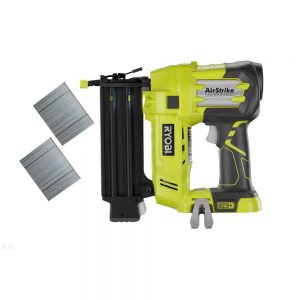
The versatility of brad nail guns includes finishing, home improvement, and woodworking projects. However, Brad nailers are not finishing nailers because the former has a different design, and its nail chamber is not angled. Generally, Brad nailers are compatible with 18-gauge or 23-gauge large (5/8 inches to 2 inches) nails.
As handy lightweight tools, Brad Nailers offer more grip power than your a finishing nail gun, and they leave very tiny holes on the material. They can use either the 15-gauge or 16-gauge nail for trim works and crown molding tasks. Additionally, the brad nailer gives tool-free depth-drive adjustment during upholstery, and woodworking projects.
Finishing Nailer
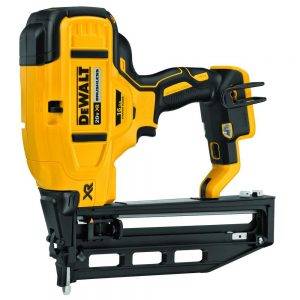
The precision of a finishing nailer is often delightful in carpentry works and lighter projects. Also, this handheld finishing nailer is ideal for paneling, and interior moldings. Most homeowners that are DIY enthusiasts prefer the finishing nailer because it creates small entry holes that can be hidden with wood fillers easily.
Pin Nailer

A pin nailer is a delicate type of nail gun that uses pin-like, 23-gauge headless nails. These pin-like fasteners leave very small holes on pieces of wood, leather and fabric materials. Apart from carpentry finishing, the pin nailer is used as temporary fasteners. Also, you can use pin nailers for crown molding, interior millwork, and thin veneers.
Palm Nailer
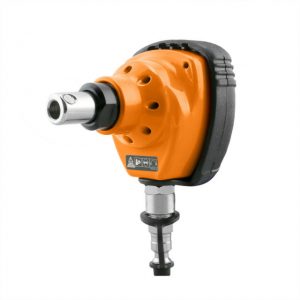
A palm nailer is a lightweight nail gun that’s operated by holding it with the palm. While using the palm nailer to drive nails (1.5 to 6 inches), you’ll be amazed at the speed it offers from its built-in pneumatic compressor. This palm nailer is suitable for fixing ceilings, and holding materials to corners and edges of a wall. Also, you can use this device for holding tight spots, and joist hangers.
Siding Nailer
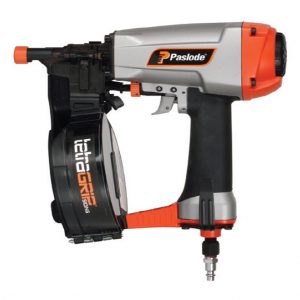
The siding nailer uses short nails with wide heads (between 1.25 to 2.5 inches) like aluminum nails to perform nailing siding project walls. This type of nailer has a soft tip that minimizes the impact of nails on your siding material. Also, siding nailers provide intense force for driving nails into flat pieces of wood, aluminum or synthetic materials.
Staple Gun

A staple gun uses staple pins for different applications. Most homeowners use their staple guns to build wooden pet houses. As a versatile nail gun, the staple gun leaves larger holes than regular nailers. However, it’s the most common nailer that shouldn’t be used to handle finishing carpentry works. Instead, you can use staple guns to hold boards, panels, pieces of fabric, and fix carpets.
Nail Gun Types Based on Power Source
Different sources of powering nail guns will be addressed in this section. Most nail gun types with canisters for their source of power use a compression method to exert force on nails. Regardless of their designs, buyers should ensure proper safety measures when handling these nailers.
Pneumatic Nail Gun
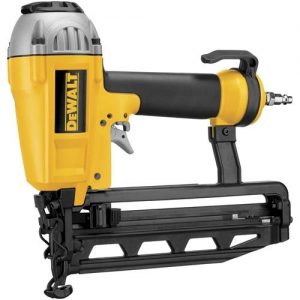
Pneumatic refers to force that’s produced with the technique of compressing air. This type of nail gun has an air compressor unit and piston-cylinder that receives air from the atmosphere. Usually, the gas-powered force that drives nails in pneumatic nail guns is ideal for concrete and metallic materials.
Electric Nail Gun
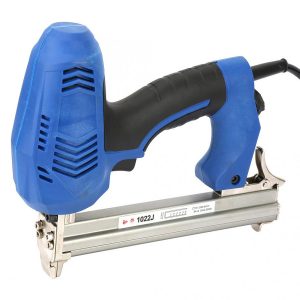
Electric nail guns have cords that supply alternating current (A.C) for driving nails. They often come with electric motors that compress special springs before propelling them to releases nails. Generally, electric nail guns have fewer weights than air-compression nailers. Also, the lightweight design prevents fatigue and makes it handle these handheld electric nail guns. You can use electric nailers for a range of DIY tasks, and industrial works.
Air Nail Gun
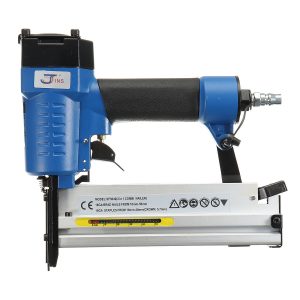
Air nail guns use the system of air compression in special chambers to propel nails into hard-surface materials. Usually, air nailers can shoot between 40 to 60 nails per minute, and they work well with oil-less compressor units. The pneumatic force they provide is ideal for handling heavy-duty construction jobs. These nail guns are often designed without rotating parts, but they have knobs for depth adjustments.
Battery Nail Gun
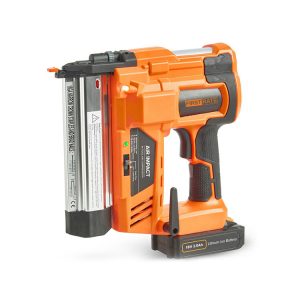
Battery nail guns are like our cordless nail gun types, but they use internal compressor units. Battery nail guns have flexibly because of their increasing power, and
ease of use. Most battery nail guns are often used for professional woodworking, and home improvement tasks that involve softwoods and hardwoods.
Cordless Nail Gun
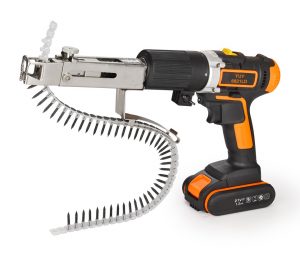
Cordless nailers are high-end models of nail guns because they work without compressor units or electric cords. Usually, they come with non-slip grip handles that allow for stability when your hand is wet. This type of nail gun has a chamber for its rechargeable battery, and it can be used in both outdoor and indoor locations. Generally, nailers with cordless designs are more expensive because they have impressive features, and their source of power (lithium-ion battery) is durable. They are also known as drywall screw gun and can be used for woodworking, roofing, or metal works.
Trim Nail Gun
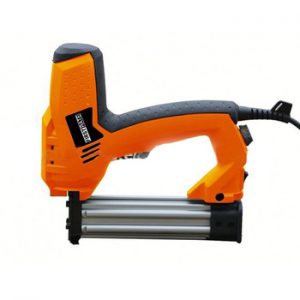
The trim nail gun is a time-efficient nailer that’s quick in installing hardwoods. Generally, hardwood moldings are tough structures that might require operators to
pre-drill. However, the trim nail gun enables operators to hold fragile molds and handle other crown molding tasks effectively.
Coil Nail Gun

Coil nail guns are compact and have large canisters that can hold at least 100 nails. It’s the coil nail gun’s drum that gives an efficient loading pattern. When it shoots nails, they fly like machine-gun bullets. This versatile nailer is ideal for framing and helps you to complete many tasks without reloading every time.
When you need different types of nail guns for your project, you must consider some basic factors. We have tested small, and medium-sized nailers to see their performance. Our experience shows that special nailers can handle different types of operations. However, the advantage of using nail guns is the conservation of energy. You don’t need to exert any force like when you use a hammer to drive nails. Instead, nailers are quick, and they come with options of power sources. Also, they are compatible with different sizes of nails, and pins. Highly functional nailers have a range of applications that include wood sheathing, fence making tasks, crown molding, and wood siding.

